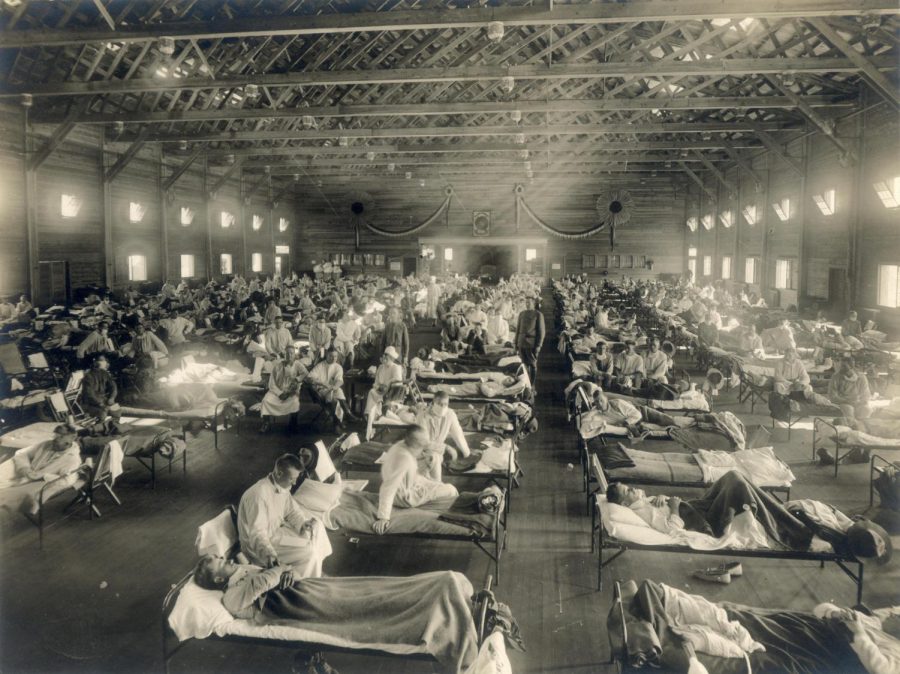Social distancing through the ages: A history of pandemics
Past pandemics help put this one into perspective
As COVID-19 is blowing up across the globe and in the news right now, how does it compare with other global pandemics from the past?
COVID-19 is only one virus within a group called coronaviruses, named after the Latin word for crown because of their crown-like structure. Other coronaviruses, such as Severe Acute Respiratory Syndrome (SARS) and Middle East Respiratory Syndrome (MERS) have devastating effects similar to that of COVID-19, but never reached the same level of threat, nor conversation, in the United States.
SARS first appeared in China 18 years ago. Within three months 8,098 people had been infected and 774 had died according to the CDC, giving the virus a 9.55% death rate, more than twice the current 4.37% mortality rate of COVID-19.
This is nothing compared to that of MERS’ 34.3% fatality rate among confirmed cases. The virus began spreading in Jordan in 2012, and has yet to be eradicated after 8 years. Today, 2,519 people are infected, and 866 have died according to the CDC.
There’s one big difference between those viruses and this new one: COVID-19 spreads more readily. According to WHO, as of Mar. 23, more than 332,000 people were infected by COVID-19, and 14,510 had died of it. There are COVID-19 positive people in the majority of countries, even in places far from the origin of the virus, a poultry and fish market in Wuhan, China.
Meanwhile, MERS has stayed confined within and near the Arabian Peninsula, and when SARS was a global threat, only 8 people in the United States contracted it, none of whom died.
So, while SARS and MERS originate from the same family, COVID-19 might be more comparable to other, more wide-ranging, viruses.
The H1N1 flu pandemic, more commonly known as the Spanish Influenza of 1918, was the deadliest flu pandemic in modern history. Some experts fear that COVID-19 could become the worst pandemic since then. There are similarities: the Spanish flu had animal origins, a death rate estimated to be above 2.5%, and was a mutation of a flu strain, just as COVID-19 is a mutation of a milder coronavirus. The biggest similarity, though, is the spread rate. During the course of its spread, H1N1 infected an estimated a third of the global population, killing 50-100 million people. COVID-19 has yet to reach this level of infection, but some experts calculate that if things continue as they are, it might.
There are major differences, though, that diminish those fears. The Spanish flu was known for speed of death; someone could wake up sick and die on their way to work, according to MedicineNet. This left little time for measures to be taken against the virus, and even if someone made it to a hospital, the level of medical care couldn’t compare to today. Also, World War I coincided with the Spanish flu pandemic, allowing the virus to spread through troops across countries and within battalions. No vaccine was created, but as health organizations spread word of the best way to cover coughs and avoid the spread, the virus eventually died out.
With our current level of medicine, adherence to health care recommendations, and recognition of the threat, COVID-19 shouldn’t reach anywhere near the devastation caused by H1N1.






































